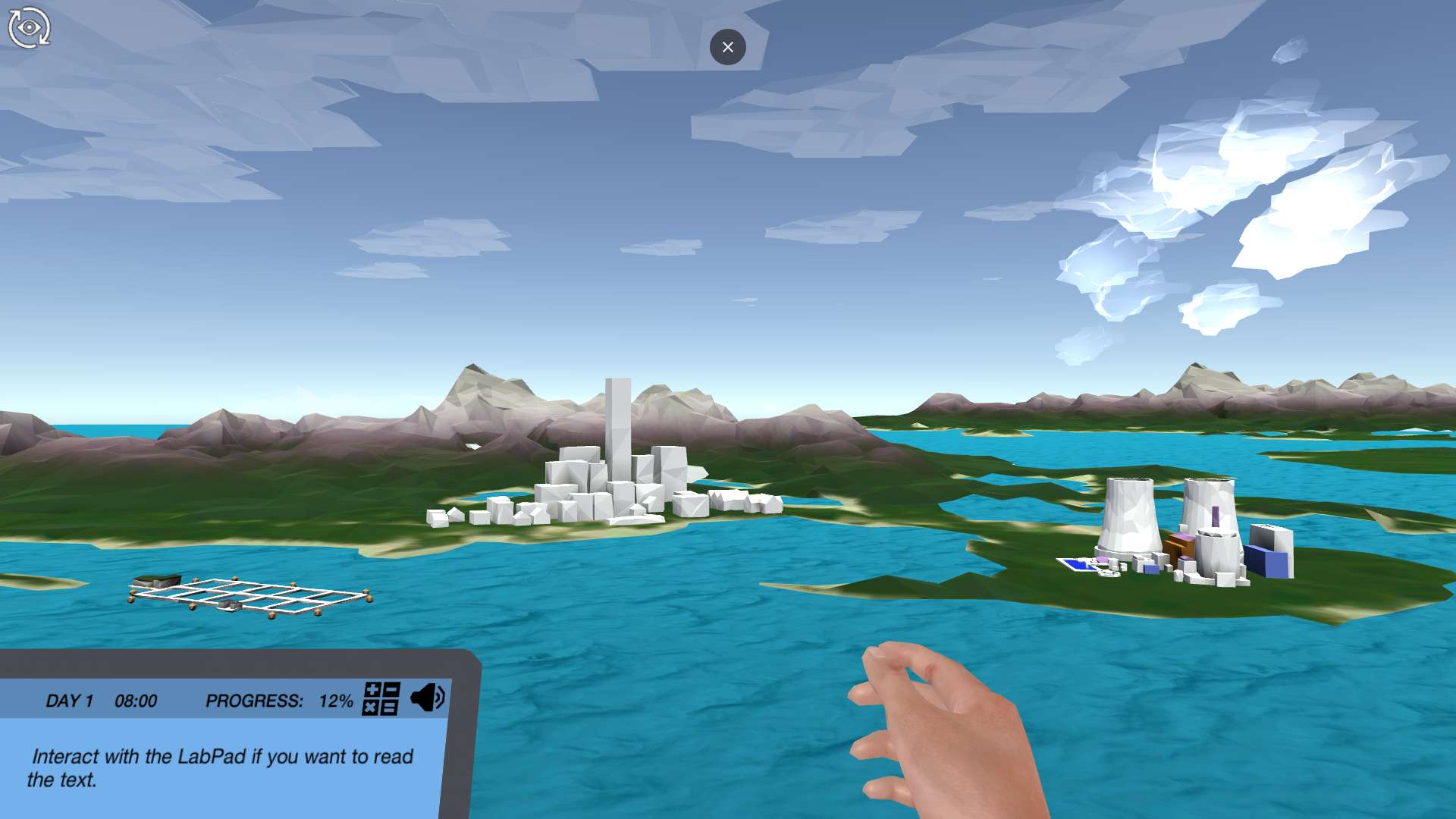Heading 1
Heading 2
Heading 3
Heading 4
Heading 5
Heading 6
Lorem ipsum dolor sit amet, consectetur adipiscing elit, sed do eiusmod tempor incididunt ut labore et dolore magna aliqua. Ut enim ad minim veniam, quis nostrud exercitation ullamco laboris nisi ut aliquip ex ea commodo consequat. Duis aute irure dolor in reprehenderit in voluptate velit esse cillum dolore eu fugiat nulla pariatur.
Block quote
Ordered list
- Item 1
- Item 2
- Item 3
Unordered list
- Item A
- Item B
- Item C
Bold text
Emphasis
Superscript
Subscript
About This Simulation
Go on a mission to produce sustainable biodiesel and learn how to safely work with dangerous chemicals without any risk of getting hurt.
Learning Objectives
- Understand how to create biodiesel from algal oil
- Identify the hazards posed by chemicals and how to handle them
- React quickly and save lives in case of a fire emergency
- Use the CAS numbers to plan your experiment
- Understand how to dispose of halogenated and non-halogenated waste
- Lookup H and P phrases in the safety data sheet
- Safely use a chemical fume hood
About This Simulation
Lab Techniques
Related Standards
- Support for laboratory skills at all levels
- Lab safety support
- Lab safety support
- Supports The Laboratory Safety Institute’s Laboratory Safety Guidelines
Learn More About This Simulation
Are you ready to work in a chemistry lab? In the Chemistry Safety simulation, you will learn how to safely work with organic solvents. Experiment with dangerous chemicals and make mistakes without putting yourself in danger.
Biodiesel for a greener world
We need to find sustainable fuel sources to reduce CO2 emissions and battle climate change. Your mission in the Chemistry Safety lab is, therefore, to find an effective process for producing biodiesel from algal oils. Can you figure out how to convert oil into diesel?
Fumes in the fume hood
In the Chemistry Safety lab, you’ll get to work with methanol, a volatile organic solvent. This means you need to work in a chemical fume hood. Learn how to set up your reaction in the fume hood and dispose of solvents in the organic waste. Look up the physical properties of your reactants in the safety data sheet to make sure your reaction will be successful.
Dangers in the lab
In the Chemistry Safety lab, you’ll learn to identify the hazards posed by the different chemicals that you are using, which is a very important step in the planning of every experiment.
Just like in the real world, things will get nasty if you make mistakes while working with dangerous chemicals.
Are you ready to react quickly in case of an emergency, and will you be able to apply your chemistry safety knowledge correctly?
For Science Programs Providing a Learning Advantage
Boost STEM Pass Rates
Boost Learning with Fun
75% of students show high engagement and improved grades with Labster
Discover Simulations That Match Your Syllabus
Easily bolster your learning objectives with relevant, interactive content
Place Students in the Shoes of Real Scientists
Practice a lab procedure or visualize theory through narrative-driven scenarios


FAQs
Find answers to frequently asked questions.
Heading 1
Heading 2
Heading 3
Heading 4
Heading 5
Heading 6
Lorem ipsum dolor sit amet, consectetur adipiscing elit, sed do eiusmod tempor incididunt ut labore et dolore magna aliqua. Ut enim ad minim veniam, quis nostrud exercitation ullamco laboris nisi ut aliquip ex ea commodo consequat. Duis aute irure dolor in reprehenderit in voluptate velit esse cillum dolore eu fugiat nulla pariatur.
Block quote
Ordered list
- Item 1
- Item 2
- Item 3
Unordered list
- Item A
- Item B
- Item C
Bold text
Emphasis
Superscript
Subscript
A Labster virtual lab is an interactive, multimedia assignment that students access right from their computers. Many Labster virtual labs prepare students for success in college by introducing foundational knowledge using multimedia visualizations that make it easier to understand complex concepts. Other Labster virtual labs prepare learners for careers in STEM labs by giving them realistic practice on lab techniques and procedures.
Labster’s virtual lab simulations are created by scientists and designed to maximize engagement and interactivity. Unlike watching a video or reading a textbook, Labster virtual labs are interactive. To make progress, students must think critically and solve a real-world problem. We believe that learning by doing makes STEM stick.
Yes, Labster is compatible with all major LMS (Learning Management Systems) including Blackboard, Canvas, D2L, Moodle, and many others. Students can access Labster like any other assignment. If your institution does not choose an LMS integration, students will log into Labster’s Course Manager once they have an account created. Your institution will decide which is the best access method.
Labster is available for purchase by instructors, faculty, and administrators at education institutions. Purchasing our starter package, Labster Explorer, can be done using a credit card if you are located in the USA, Canada, or Mexico. If you are outside of North America or are choosing a higher plan, please speak with a Labster sales representative. Compare plans.
Labster supports a wide range of STEM courses at the high school, college, and university level across fields in biology, chemistry, physics, and health sciences. You can identify topics for your courses by searching our Content Catalog.















